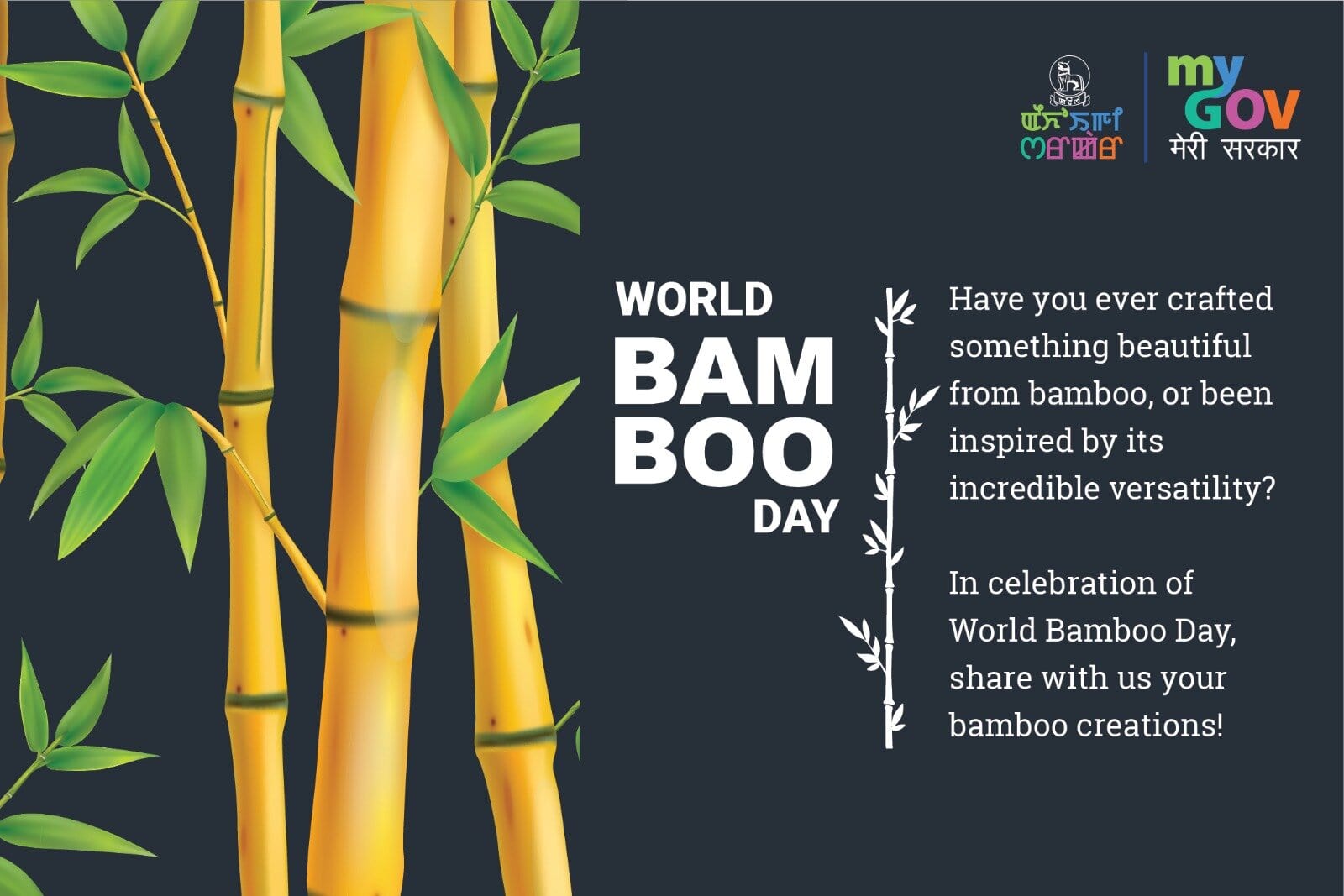- Department of Art & Culture
- Creative Corner
- Department of Agriculture
- Department of Education
- Department of Fisheries
- Department of Horticulture & Soil Conservation
- Department of Information Technology
- Department of MAHUD
- Department of Science & Technology
- Department of Sericulture
- Department of Tourism
- Department of Trade Commerce & Industries
- Department Of Transport
- Directorate of Health Services
- Finance Department
- Forest Department, Government of Manipur
- General Administration Department
- Imphal Municipal Corporation
- Manipur Fire Service
- Manipur Police Housing Corporation Limited (MPHC Ltd.)
- Open Forum
- Social Welfare Department
In celebration of world Bamboo Day, Share with us your bamboo creations
If you've created anything using bamboo- be it artwork furniture, home, decor, or anything else- snap a photo and sharing it with us. Let's photo and sharing it with us. Let's make ...

If you've created anything using bamboo- be it artwork furniture, home, decor, or anything else- snap a photo and sharing it with us. Let's photo and sharing it with us. Let's make this World Bamboo Day unforgettable by showcasing the beauty and sustainability of bamboo












BrahmDevYadav 1 year 11 months ago
What are the future uses of bamboo?
However, there are also many other uses including new chemical and electrical bamboo-based biomaterials, 'bambootronics', cosmetics, pharmaceuticals,foods and food additives,fabrics, and biocomposites.
BrahmDevYadav 1 year 11 months ago
What are the Uses of Bamboo Products?
1.Food:- Famed for being a favored food of pandas, it comes as no surprise that one of the
top uses of bamboo is as an edible source.
2.Medicines:- Bamboo has long been used in medicine across the world and most notably in
China and Indonesia.
3.Roads.
4.Buildings.
5.Clothing.
6.Fuel.
7.Paper.
8.Nappies.
BrahmDevYadav 1 year 11 months ago
What is the greatest advantage of bamboo?
Bamboo plant releases up-to 35% more oxygen and absorb more CO2 per hectare than equivalent trees. Bamboo prevents soil erosion too.
BrahmDevYadav 1 year 11 months ago
Why is bamboo more sustainable than plastic?
The biodegradable nature of these bamboo products further emphasises their environmental benefits. Unlike plastic containers, which can persist in the environment for hundreds of years, bamboo containers decompose naturally, returning valuable nutrients to the earth and completing the natural lifecycle.
BrahmDevYadav 1 year 11 months ago
Why is bamboo sustainable for building?
Because bamboo is very resilient, environmentally damaging pesticides and fertilisers are not needed. When the bamboo plant is harvested, it is not killed. Instead, part of the stalk is left in the forest, stimulating the root system and prompting the plant to regrow.
BrahmDevYadav 1 year 11 months ago
Why is bamboo the most sustainable material?
Bamboo can be a easily sustained and maintained a fast growing grass, it requires no fertiliser and self-regenerates from its own roots so it does not need to be replanted. When compared to cotton cultivation, which requires large amounts of water, pesticides and labour as well as the advantages are pretty clear.
BrahmDevYadav 1 year 11 months ago
Is bamboo sustainable for the future?
Despite all of this it is important to remember that bamboo is only sustainable, if it is planted and harvested properly. Bamboo should be planted as part of a regenerative and diverse land management and forest system as opposed to a monocrop system.
BrahmDevYadav 1 year 11 months ago
Is bamboo good for sustainability?
Buying an item made of bamboo instead of normal wood is a lot more sustainable because bamboo regrows in three years, while trees can take decades to regrow once they are cut. It is not to mention that bamboo self-regenerates from its own root system so there is no need to replant it.
BrahmDevYadav 1 year 11 months ago
What is the importance of bamboo?
This amazing plant has unique rapid growth and can play an important role in protecting our planet from pollution and improving the soil. Bamboo can be used as a biofuel, food and for architecture and construction applications and plays a large role in the local economy by creating job opportunities.
BrahmDevYadav 1 year 11 months ago
What are the environmental benefits of bamboo?
According to research, bamboo releases 35% more oxygen into the air than your average tree. It can also absorb 12 tonnes of carbon dioxide per hectare and year pretty impressive.